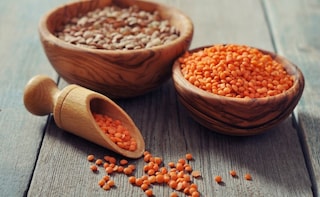In the last one year, we may have managed to get a hold on inflation, but not on the prices of one of the most commonly eaten foods, pulses. Reports suggest that lack of domestic production maybe responsible for the skyrocketing price of pulses.
Advertisement
Advertisement
Advertisement
For the latest food news, health tips and recipes, like us on Facebook or follow us on Twitter and YouTube.
Advertisement
Tags:
